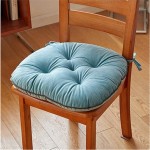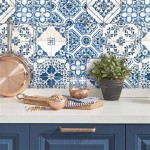Kitchen Stool and Step Ladder: Versatile Tools for the Modern Home
Kitchen stools and step ladders are often overlooked as essential household items, yet their utility extends far beyond simply providing a boost to reach high shelves. These tools offer a blend of functionality, convenience, and, in some cases, aesthetic appeal, making them valuable additions to any home, particularly the kitchen. Understanding the different types available, their specific uses, and safety considerations is crucial for selecting the right tool for individual needs.
The kitchen, in particular, presents a unique environment where both kitchen stools and step ladders find frequent application. From accessing ingredients stored in upper cabinets to changing light bulbs above the counter, these tools bridge the gap between accessibility and practicality. Moreover, their design has evolved considerably, incorporating features that prioritize user safety, comfort, and space-saving storage.
Beyond the kitchen, the applications extend to other areas of the home, from gardening tasks to reaching items in the garage or attic. The versatility of these tools underscores their importance in maintaining a well-organized and easily navigable living space. Choosing between a kitchen stool and a step ladder often depends on the frequency of use, height requirements, and storage space limitations. This article will explore the distinct features, benefits, and considerations when selecting a kitchen stool or step ladder, ensuring informed decisions for homeowners.
Key Point 1: Distinguishing Features and Applications
The primary distinction between a kitchen stool and a step ladder lies in their intended use and design. Kitchen stools are typically characterized by a simple construction, often featuring a single step or no steps at all, and are designed for providing a slight boost in height for short-duration tasks. They are frequently found in kitchens to assist with everyday activities such as reaching items in cabinets or counter tops.
Step ladders, on the other hand, are designed with multiple steps and a higher weight capacity, making them suitable for more demanding tasks that require sustained elevation. These tasks could include painting walls, changing light fixtures, or accessing storage in high places. The presence of multiple steps allows for greater adjustability in height, catering to a wider range of individuals and tasks.
Kitchen stools often prioritize portability and aesthetics. Many models are lightweight and easily moved around the kitchen as needed. Furthermore, they are frequently designed to complement the existing decor, offering a range of styles and finishes to match kitchen cabinetry or countertops. Step ladders, while also designed with portability in mind, are more focused on stability and safety. They typically feature wider steps and non-slip surfaces to provide a secure platform for the user.
The choice between a kitchen stool and a step ladder should be guided by the types of tasks anticipated. For intermittent, low-height assistance, a kitchen stool is often sufficient. However, for tasks involving significant height or prolonged periods of standing, a step ladder is the more appropriate and safer option. The user should also consider the available storage space when making a selection. Kitchen stools are generally more compact and easier to store, while step ladders may require more dedicated storage space.
Key Point 2: Materials, Design, and Safety Considerations
The materials used in the construction of kitchen stools and step ladders play a significant role in their durability, weight capacity, and overall safety. Common materials include wood, aluminum, steel, and plastic. Each material offers distinct advantages and disadvantages in terms of strength, weight, and resistance to corrosion.
Wooden kitchen stools and step ladders provide a classic aesthetic and can be easily integrated into traditional kitchen designs. However, wood can be susceptible to moisture damage and may require regular maintenance to prevent warping or cracking. Aluminum step ladders are lightweight and resistant to corrosion, making them suitable for both indoor and outdoor use. Steel step ladders offer exceptional strength and stability but are typically heavier than aluminum models. Plastic kitchen stools are often the most affordable option and are easy to clean, but they may not be as durable as stools made from other materials.
Design considerations are equally important when selecting a kitchen stool or step ladder. Features such as non-slip treads, wide steps, and sturdy handrails enhance user safety and stability. Step ladders with locking mechanisms provide an added layer of security by preventing accidental collapses during use. The weight capacity of the stool or ladder should also be carefully considered, ensuring that it can safely support the user and any tools or materials they may be carrying.
Safety certifications, such as those issued by ANSI (American National Standards Institute) or OSHA (Occupational Safety and Health Administration), provide assurance that the stool or ladder has been tested and meets established safety standards. Users should always inspect the stool or ladder for any signs of damage before each use, including loose screws, wobbly legs, or cracked steps. Proper storage is also crucial for maintaining the safety and longevity of these tools. Step ladders should be stored in a dry place, away from direct sunlight or extreme temperatures, to prevent warping or corrosion.
Furthermore, the user should always follow the manufacturer's instructions for proper use and maintenance. Overloading the stool or ladder beyond its rated weight capacity can lead to structural failure and potential injury. It's important to distribute weight evenly on the steps and avoid leaning too far to one side. When using a step ladder, ensure that it is placed on a level surface and that all locking mechanisms are properly engaged before climbing.
Key Point 3: Ergonomics, Storage, and Aesthetic Integration
Beyond functionality and safety, ergonomics, storage, and aesthetic integration contribute significantly to the overall user experience with kitchen stools and step ladders. Ergonomic design focuses on optimizing comfort and reducing strain during use, while efficient storage solutions address the challenge of limited space in many kitchens. The aesthetic integration, in turn, allows these tools to seamlessly blend into the existing kitchen environment.
Ergonomic considerations include the height and depth of the steps, the angle of the ladder, and the presence of handrails or support bars. A well-designed kitchen stool or step ladder should allow the user to maintain a comfortable posture while reaching for items, minimizing the risk of back pain or muscle fatigue. Features such as padded steps and contoured handrails can further enhance comfort during prolonged use.
Storage is a critical factor, especially in smaller kitchens where space is at a premium. Collapsible or folding step ladders are designed to be easily stored in narrow spaces, such as behind doors or in closets. Some kitchen stools are designed with stackable configurations, allowing multiple stools to be stored compactly when not in use. Wall-mounted step ladders offer another space-saving solution, allowing the ladder to be easily deployed and retracted as needed.
Aesthetic integration involves selecting a kitchen stool or step ladder that complements the existing design of the kitchen. Kitchen stools are available in a wide range of styles, materials, and finishes, allowing homeowners to choose a model that matches their cabinetry, countertops, or flooring. Step ladders are also available in various colors and finishes, although the focus is typically on functionality rather than aesthetics.
The choice of materials can also contribute to the aesthetic integration. Wooden kitchen stools offer a warm, traditional look, while metal stools provide a more modern, industrial feel. Clear acrylic or polycarbonate stools can blend seamlessly into any kitchen design, offering a minimalist and unobtrusive solution. The user should consider the overall style of their kitchen when selecting a kitchen stool or step ladder, ensuring that it enhances rather than detracts from the existing decor.
In conclusion, the selection and procurement of a kitchen stool and step ladder demands careful consideration of factors extending beyond mere height requirements. The materials, design, safety certifications, ergonomic features, storage solutions, and aesthetic integration all collectively contribute to the overall utility and value that these tools provide in the modern home. A well-informed and deliberate decision will ensure a safe, comfortable, and aesthetically pleasing addition to the kitchen environment.

Kitchen Step Stool Stepping Ladder Folding Bar Library Steps Foot Bed Side Table Tall Wood Mother Gift Etsy

Help Tower Fold Kitchen Ladder Step Stool Adult Slim Foldable Adjustable Toddler Helper Convertible Kids Furniture Etsy

Costway 3 Tier Wood Step Stool Indoor Folding Ladder

Convertible Stair Stool Kitchen Library Folding 4 Step Ladder Solid Wood Ebay

Top Rated Kitchen Step Stools And Ladders Food Network

10 Easy Pieces Slim Step Ladders For Small Spaces Remodelista

Folding Step Stool With Seat Black Ladder Library Steps Kitchen Adult Wooden Stepladder Orange Chair Etsy

How To Build A Bar Stool Step Ladder

Dhgate Com 3 Step Solid Wood Folding Kitchen Stool Multifunctional Reinforced Ladder Chair With Thickened Construction And Fine Workmanship Home Garden

Metamorphic Kitchen Step Stool 1890s For Sale At Pamono








